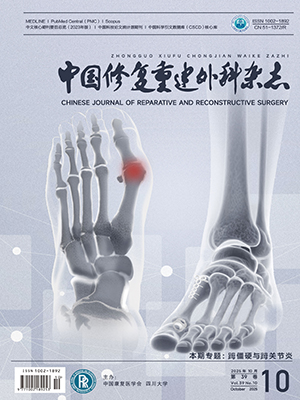Objective To explore the effectiveness of limb shortening/re-lengthening technique combined with in situ tissue regeneration technique in limb salvage for patients with complex lower limb fractures and soft tissue defects. Methods Between January 2021 and December 2024, 12 patients with complex lower limb fractures and soft tissue defects caused by trauma were admitted. There were 10 males and 2 females; the age ranged from 18 to 46 years, with an average of 36 years. Among them, 1 case of open comminuted tibiofibular fracture caused bone necrosis and soft tissue infection; 4 cases of open tibiofibular fractures developed bone and soft tissue infections after being fixed with a combined external fixator, resulting in defects; 7 cases of closed tibial fractures that underwent internal fixation developed soft tissue infections, leading to bone and soft tissue necrosis. The time from injury to the formation of bone and soft tissue defects was 2-9 weeks, with an average of 6 weeks. The length of bone defects was 5.0-10.2 cm, with an average of 6.8 cm; the area of soft tissue defects was 32-54 cm2, with an average of 43.9 cm2. After admission, all patients underwent thorough debridement. The limb shortening treatment was performed after the wound had filled with fresh granulation tissue, and an Ilizarov ring-shaped external fixator was placed or replaced. The limb was shortened at a rate of 1 mm/day to reduce bone defects. At the same time, the soft tissue defects were repaired using the in situ tissue regeneration technique. After the wound healed, osteotomy was performed, and limb lengthening was carried out at a rate of 1 mm/day. The lower limb full-length X-ray films were taken, and the lengthening was stopped when the lower limb alignment was restored. The healing condition of the wound was observed and the healing time was recorded. Results One patient died due to a traffic accident during limb lengthening. The remaining 11 patients completed limb shortening and re-lengthening treatment and were followed up 18-36 months, with an average of 20 months. All 11 patients successfully preserved their limbs. The wound healing time was 4-12 weeks, with an average of 8 weeks; the limb shortening time was 4-8 weeks, with an average of 6 weeks; and the limb lengthening time was 4-12 weeks, with an average of 8 weeks. One patient experienced delayed bone mineralization during bone lengthening, and one had pin tract infection. Both were treated symptomatically. The lower limb mechanical axis of all 11 patients was restored, and they were able to walk independently. Conclusion The application of limb shortening/re-lengthening technique combined with in situ tissue regeneration technique in the treatment of large bone and soft tissue defects not only effectively avoids the occurrence of nonunion at the apposition ends and increases the stability of the lower limb, but also significantly shortens the wound healing time, avoids the risk of soft tissue infection and increases the limb salvage rate. It can be used as a treatment technique for patients with complex lower limb fractures combined with soft tissue defects.
Citation:
LIU Hong, REN Yuanmeng, YAN Xianyan, WANG Baona, WANG Dong, QIAO Huyun, GUO Jinli, ZHANG Yonghong. Application of limb shortening/re-lengthening technique and in situ tissue regeneration technique in limb salvage for complex lower limb fractures combined with soft tissue defects. Chinese Journal of Reparative and Reconstructive Surgery, 2025, 39(8): 1014-1019. doi: 10.7507/1002-1892.202504119
Copy
Copyright © the editorial department of Chinese Journal of Reparative and Reconstructive Surgery of West China Medical Publisher. All rights reserved
| 1. |
|
| 2. |
|
| 3. |
|
| 4. |
|
| 5. |
|
| 6. |
|
| 7. |
|
| 8. |
|
| 9. |
|
| 10. |
|
| 11. |
|
| 12. |
|
| 13. |
|
| 14. |
|
| 15. |
Du J, Liu W, Song Y, et al. Activating autophagy promotes skin regeneration induced by mechanical stretch during tissue expansion. Burns Trauma, 2024, 12. doi: 10.1093/burnst/tkad057.
|
| 16. |
Vanstraelen S, Ali B, Bains MS, et al. The contribution of microvascular free flaps and pedicled flaps to successful chest wall surgery. J Thorac Cardiovasc Surg, 2023, 166(4): 1262-1272. e2.
|
| 17. |
|
| 18. |
|
| 19. |
Gao S, Zhou R, Gao W. Repairing small facial soft tissue defects by tissue regeneration in Asians. J Craniofac Surg. 2023, 34(2): 708-711.
|
| 20. |
|
- 1.
- 2.
- 3.
- 4.
- 5.
- 6.
- 7.
- 8.
- 9.
- 10.
- 11.
- 12.
- 13.
- 14.
- 15. Du J, Liu W, Song Y, et al. Activating autophagy promotes skin regeneration induced by mechanical stretch during tissue expansion. Burns Trauma, 2024, 12. doi: 10.1093/burnst/tkad057.
- 16. Vanstraelen S, Ali B, Bains MS, et al. The contribution of microvascular free flaps and pedicled flaps to successful chest wall surgery. J Thorac Cardiovasc Surg, 2023, 166(4): 1262-1272. e2.
- 17.
- 18.
- 19. Gao S, Zhou R, Gao W. Repairing small facial soft tissue defects by tissue regeneration in Asians. J Craniofac Surg. 2023, 34(2): 708-711.
- 20.




